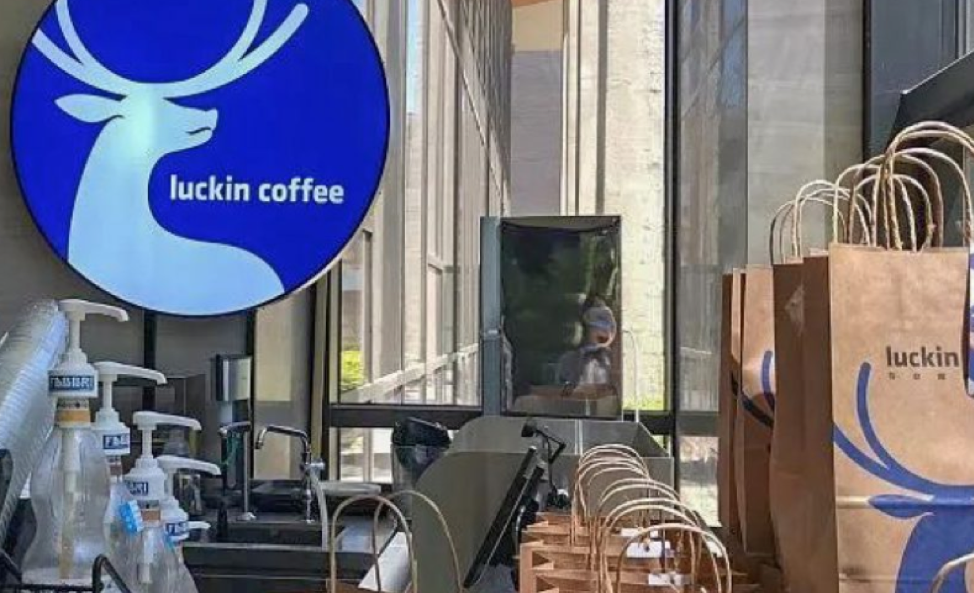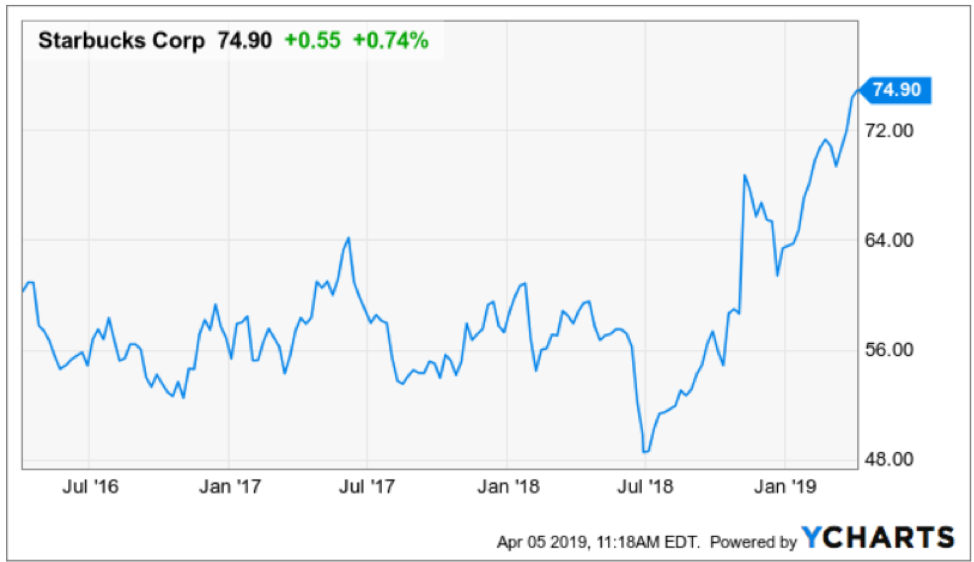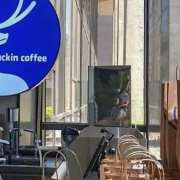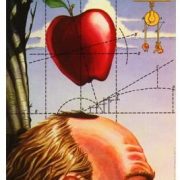If you ask me what you should sample at a Starbucks in China - I would say nothing.
Starbucks has become successful on the back of selling bad tasting coffee to the Chinese.
Even more peculiar, the CEO of Starbucks Kevin Johnson has been captaining the ship since 2017.
After watching Johnson's interview with Bloomberg, I fully believe he is not adequately prepared for what the future beholds.
Let me explain why.
Johnson started at IBM (IBM) in the 80s as an engineer, but he hasn't been an engineer for the last 20 odd years.
In the early 2000s, he became a salesman at Microsoft (MSFT), and his interview revealed that he is still a salesman at heart.
He continued to refer back to his engineering background, yet the know-how he accumulated in the 80s at IBM has little relevance to the “move fast and break things” environment of today.
Johnson was groomed under the tutelage of Microsoft’s Steve Ballmer at Microsoft, a salesman, who almost sunk Microsoft during his tenure.
Anyone who trained under Steve Ballmer is someone that would need to walk across fiery embers to prove his or her viability.
The interview with Bloomberg felt like an inauthentic marketing video, with Johnson regurgitating salesman rhetoric with little substance.
As Starbucks shreds the bear story of naysayers to make new all-time highs, there are serious icebergs ahead because of disruptive technological start-ups.
Starbucks has relied on emerging markets as its growth engine inaugurating 612 stores in China last year, and another 600 will come online before 2022.
Selling bad coffee to Chinese will be more difficult going forward.
The prominent tea drinking nation had no idea what good coffee tasted like 10 years ago.
Even recently, many Chinese thought instant coffee packaged in those convenient stick-shaped packets was high-grade coffee.
The last five years has seen an unmitigated onslaught of Chinese international tourism mainly flowing to Europe, Canada, Australia, and America.
Not only did Chinese shop until their panties dropped, but they began to become more inclined to understand culinary and cultural aspects of foreign cultures like, for instance, how good coffee should taste among other cultural trappings.
Five years ago, Chinese also went to Starbucks to sample the coffee. Now, they go to Starbucks because the interiors are comfortable making it a plausible place for an impromptu business meeting in a downtown or business district location.
Let’s remember that Starbucks could never crack the Italian market because teaching Italians how to make coffee doesn’t sell in Italy.
It took until last September to open the first Starbucks in the cultural center of Milan, Italy, and I can tell you that it’s not a regular, cookie cutter Starbucks.
The Milan Starbucks is billed as a “Reserve Roastery” with marble finishes contributed from the supplier that up until now was only used to build the famed Duomo of Milan and buildings in the surrounding Piazza.
To say this Starbucks is posh is an understatement.
The 25,000-square-foot coffee shop delivers small-batch roastings of exotic coffees from more than 30 countries, and artisanal food from the local culinary rock star, Rocco Princi.
In fact, Starbucks built it into a four-star restaurant with expensive cocktails and the whole shebang.
Understandably, the average revenue per user (ARPU) at the Italian roastery earns 400% more than the average American Starbucks shop.
This is what Starbucks had to do to get their first footprint into Italy, while coffee know-how isn’t up to that level in China, differentiating variables will be harder to discover moving forward as Chinese customers look to handcrafted, artisanal options demanding a superior customer experience.
The generic Starbucks in China sells mediocre black coffee made from inferior beans for $5 per cup, a far cry from the reserve roastery in Milan.
If you get into the creamier, frothy types of drinks, then price points shoot up to $6 or $7.
Meet the current tech disruptor of coffee business in China, Luckin Coffee headed by Chinese tech entrepreneur Qian Zhiya.
Her impressive resume spans from COO of Shenzhou, a car rental app and website, to Co-founder of UCAR, a ride-hailing service spun off from Shenzhou.
During the Bloomberg interview, Kevin Johnson bragged that Starbucks is opening a new Chinese Starbucks every 15 hours.
He forgot to mention Starbucks' local competitor opens a new Luckin Coffee every 8 hours amounting to about 3 per day.
Luckin Coffee's plan is to open 1,950 more stores in the next 18 months.
This has the inklings of a dogfight down to zero with a local upstart, and ask how that turned out for Facebook, Google, or even Amazon in China.
Every FANG except Apple (AAPL) cease to exist in China now, and brewing bad coffee doesn’t create the positive network effect that Apple has in China, effectively delivering an additional 4 million ancillary jobs connected to the iOS system.
The entrenched nature of Apple in China means they cannot be removed without catastrophic job losses to local Chinese triggering massive social unrest.
In the case of Starbucks, every location that folds, employees can walk across the street to join a Luckin Coffee franchise, such is an environment in a zero-sum game.
Qian envisions coffee shops like a tech empire because of her background, and has earmarked fresh capital for product R&D, technology innovation, and business development.
Luckin is hellbent on capturing young office workers with its locations, delivery services, and low prices, operating a no-frills type of Starbucks alternative.
They have undercut Starbucks pricing by offering the same cup of Americano $5 coffee for $3.15.
How about their expansion plans?
Locations will explode to 4,500 by the end of 2019 which will eclipse the number of Chinese Starbucks in mid-2019.
The company has relied on technology, over half of the locations lack physical seating, shrinking space by way of applying kiosk structures as a coffee preparation station before customers access delivery orders through the smartphone app.
Digital payments are common via WeChat or Luckin’s own “coffee wallet,” and over 70% of digital customers are under 30.
Luckin's strategy is a far cry from the plush sofas of Starbucks' home away from home strategy. Distinctively, Luckin does not want customers to lounge around and talk business.
The rise of Luckin Coffee coincides with hamstringing Starbucks' comparable-store sales growth rising just 1%, with a 2% decline in transactions, down from 6% sales growth the prior Q1.
CFO Patrick Grismer did what CEO Kevin Johnson could not, admitting, “we have to acknowledge that competition is intensifying.”
Luckin Coffee burned through more than $100 million in cash in 2018, and like the prototypical tech company, will burn more cash to intensify competition with Starbucks.
I predict they will head further into deeper coffee discounts to snatch market share.
Other possible pain points for Starbucks that Qian could exploit are more subsidized deliveries which could continue for another “3-5 years” but could be extended if need be.
Qian is content with her model, stating she is “in no rush to make a profit,” signaling convenient access to a trove of generous debt instruments.
The best-case scenario in 2019 is that Starbucks' profit margins shrink or stagnate in China, the worst case, they lose significant Chinese market share and tier 1 city franchises continue to cannibalize revenue.
Starbucks' golden years in China are over and you can thank technology for offering a model to compete with them.
If Starbucks' shares continue moving up, it won’t be for much longer.





